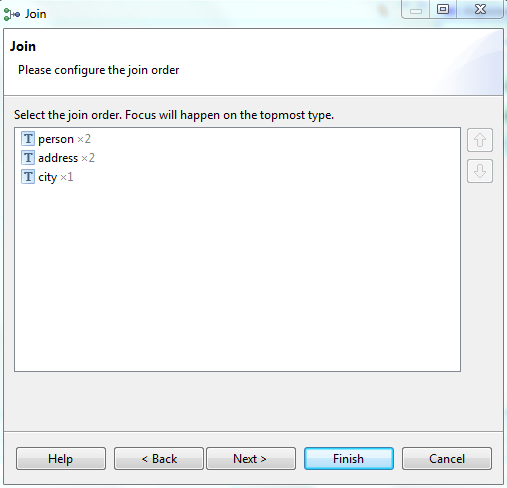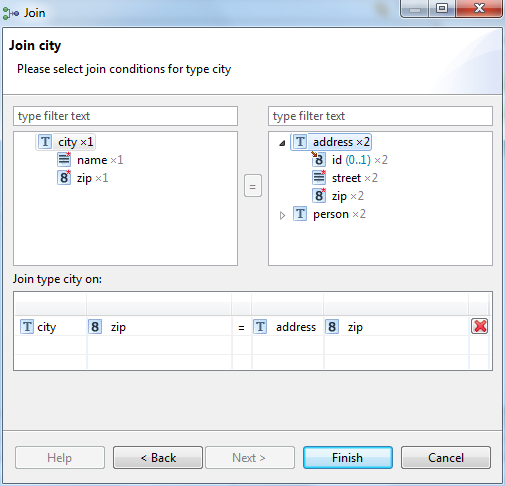Joins multiple instances of different source types into one instance of the target type, based on one or more matching properties.
Category: General
Parameter:
The first step for creating a join transformation is to select the order of the source types. For each instance of the topmost type a target instance will be created. The following types will be joined in order to fill the result with additional information. This can also result in several instances of the second type for one particular instance of the first type. The third type then can have several instances matching one of those instances of the second type (or the first type again depending on the conditions) and so on.

Each type after the first needs at least one join condition on the previous types. It can have conditions on only one of the previous types but it may also have conditions on several of them. Conditions are simple equalities. A property of the joined type is compared to the selected property of a base type. If all these conditions are equal the instance is used. A particular instance may match more than one instance of the previous types and will then be used each time.

To create a condition, select a property on the left and on the right side, then click on the button in the middle.
To activate the use of the Index Join Handler for all Join and Groovy
Join transformations, set the Java system property hale.functions.use_index_join_handler
or the environment variable HALE_FUNCTIONS_USE_INDEX_JOIN_HANDLER.
The Index Join Handler is experimental and can potentially have a negative impact on the performance of Join and Groovy Join transformations.
true